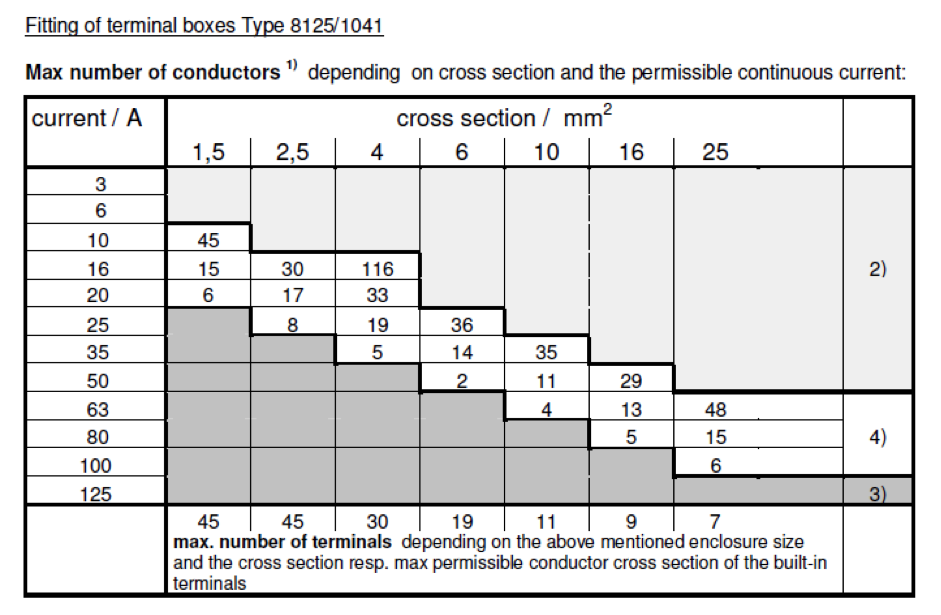3 Easy Facts About Roar Solutions Explained
3 Easy Facts About Roar Solutions Explained
Blog Article
A Biased View of Roar Solutions
Table of ContentsRoar Solutions Fundamentals ExplainedThe Best Strategy To Use For Roar SolutionsGetting My Roar Solutions To Work
In order to secure installations from a possible surge a technique of evaluating and categorizing a possibly unsafe area is called for. The purpose of this is to ensure the proper selection and installation of tools to eventually stop a surge and to make sure security of life.
(https://roarsolutions.creator-spring.com)
No tools ought to be installed where the surface area temperature level of the devices is higher than the ignition temperature level of the given hazard. Below are some common dust dangerous and their minimal ignition temperature. Coal Dirt 380C 225C Polythene 420C (melts) Methyl Cellulose 420C 320C Starch 460C 435C Flour 490C 340C Sugar 490C 460C Grain Dirt 510C 300C Phenolic Material 530C > 450C Aluminium 590C > 450C PVC 700C > 450C Residue 810C 570C The likelihood of the risk existing in a focus high adequate to cause an ignition will certainly differ from place to location.
In order to categorize this risk an installment is separated right into locations of threat depending upon the amount of time the hazardous is present. These locations are described as Areas. For gases and vapours and dusts and fibres there are three zones. Area 0 Zone 20 A hazardous atmosphere is extremely likely to be present and may exist for extended periods of time (> 1000 hours each year) or perhaps continuously Zone 1 Area 21 A harmful ambience is feasible yet not likely to be existing for lengthy durations of time (> 10 450 C [842 F] A category of T6 indicates the minimum ignition temperature level is > 85 C [185 F] Unsafe location electric tools perhaps made for usage in greater ambient temperature levels. This would showed on the rating plate e.g. EExe II C T3 Ta + 60C( This indicates at 60C ambient T3 will not be exceeded) T1 T1, T2, T3, T4, T5, T6 T2 T2, T3, T4, T5, T6 T3 T3, T4, T5, T6 T4 T4, T5, T6 T5 T5, T6 T6 T6 A T Class score of T1 indicates the optimum surface temperature generated by the tool at 40 C is 450 C. Thinking the linked T Course and Temperature ranking for the devices are appropriate for the location, you can constantly make use of an instrument with a more strict Department ranking than required for the location. There isn't a clear response to this question unfortunately. It really does depend upon the sort of devices and what repair services require to be accomplished. Tools with certain test procedures that can't be performed in the field in order to achieve/maintain 3rd party ranking. Have to return to the manufacturing facility if it is prior to the devices's solution. Field Repair Service By Authorised Worker: Difficult screening might not be required however certain treatments might need to be complied with in order for the tools to preserve its third event ranking. Authorized employees need to be employed to do the work correctly Repair service should be a like for like replacement. New part have to be taken into consideration as a direct substitute needing no special testing of the tools after the repair service is total. Each tool with a harmful rating need to be examined independently. These are laid out at a high degree listed below, however, for more comprehensive information, please refer directly to the guidelines.
Excitement About Roar Solutions
The devices register is a thorough data source of tools documents that consists of a minimum set of areas to determine each product's location, technical specifications, Ex lover classification, age, and ecological information. The proportion of Thorough to Close evaluations will be figured out by the Tools Danger, which is assessed based on ignition risk (the chance of a resource of ignition versus the likelihood of a combustible ambience )and the dangerous location category
( Zone 0, 1, or 2). Applying a durable Risk-Based Evaluation( RBI )strategy is important for guaranteeing compliance and security in taking care of Electric Equipment in Hazardous Areas( EEHA).
The Basic Principles Of Roar Solutions

In regards to eruptive risk, a dangerous location is an environment in which an eruptive ambience is existing (or may be expected to be existing) in amounts that require unique precautions for the construction, installment and use devices. hazardous area course. In this short article we discover the obstacles dealt with in the office, the danger control actions, and the required proficiencies to work securely
These substances can, in certain conditions, form eruptive ambiences and these can have major and tragic repercussions. Many of us are familiar with the fire recommended you read triangular eliminate any type of one of the 3 components and the fire can not happen, yet what does this mean in the context of unsafe areas?
In most circumstances, we can do little regarding the levels of oxygen airborne, yet we can have substantial influence on resources of ignition, as an example electric devices. Harmful areas are documented on the dangerous area classification drawing and are identified on-site by the triangular "EX LOVER" indicator. Below, among various other essential information, areas are divided into three types depending upon the hazard, the possibility and duration that an explosive atmosphere will exist; Zone 0 or 20 is regarded the most unsafe and Zone 2 or 22 is considered the least.
Report this page